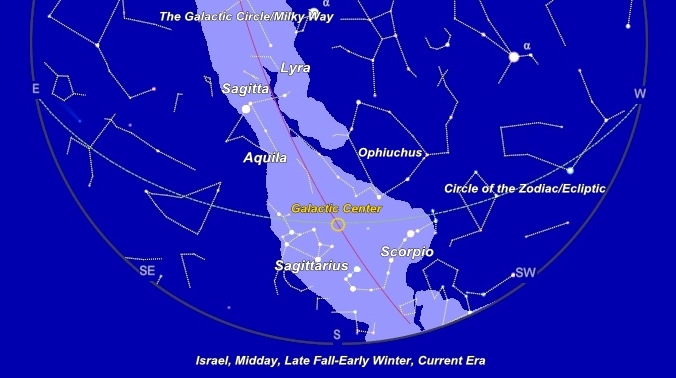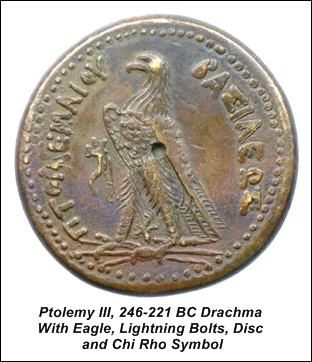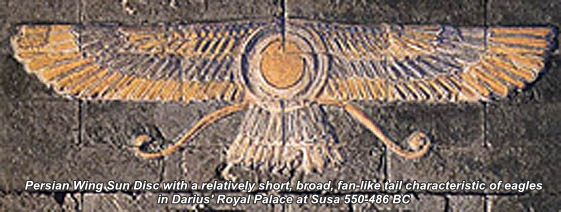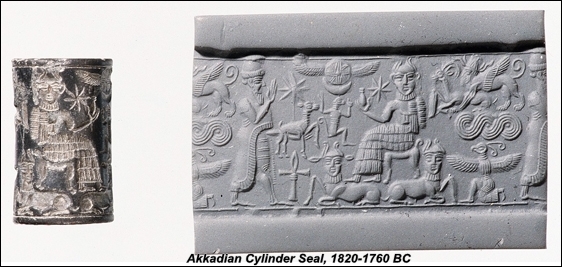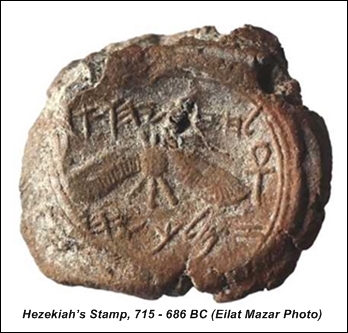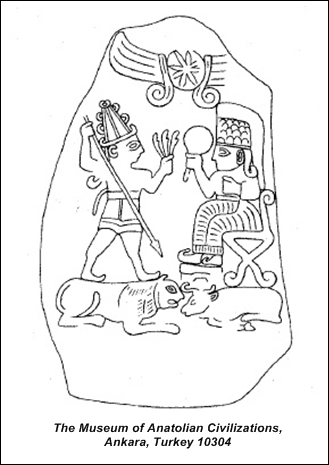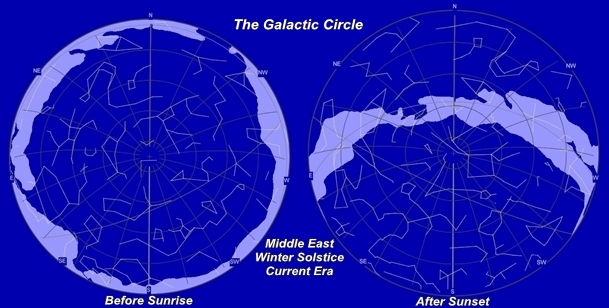|
The Galactic Center and
the Gospel of Matthew
The Sign of the Son of
Man in the Clouds of Heaven Chapter
3 By
Steve Santini March, 2017 For as the lightning
cometh out of the east, and shineth even unto the
west; so shall also the coming of the Son of man be. For wheresoever
the carcase is, there will the eagles be gathered together. Matthew 24:27-28 In the record containing the reference
to the lightning moving across heaven in Matthew's gospel is different than
the record in Luke's gospel. It is different in audience, location, time and
substance. In Matthew's gospel Jesus was speaking to his disciples on the
Mount of Olives several days after he had responded to the Pharisees question
regarding the sign for the coming of the kingdom of God while traveling
through Sion. The substance of Jesus' further
response to his disciples' question of where
in Luke's gospel regarded salvation. However, his response to his disciples'
questions of what and when on the Mount of Olives in
Matthew's gospel regarded judgment. Yet, both records in their respective
contexts refer to the lightning moving across heaven. The context previous to his disciples
questions of what and when in Matthew's record contains the well know eight
woes that Jesus pronounced upon the Pharisees followed by his judgment
pronounced upon Jerusalem. But woe
unto you, scribes and Pharisees, hypocrites! for ye
shut up the kingdom of heaven against men: for ye neither go in yourselves,
neither suffer ye them that are entering to go in. Woe unto you, scribes and
Pharisees, hypocrites! for ye devour widows' houses,
and for a pretence make long prayer: therefore ye shall receive the greater
damnation. Woe unto you, scribes and
Pharisees, hypocrites! for ye compass sea and land
to make one proselyte, and when he is made, ye make him twofold more the
child of hell than yourselves. Woe unto you, ye blind
guides, which say, Whosoever shall swear by the temple, it is nothing; but
whosoever shall swear by the gold of the temple, he is a debtor! Ye fools and blind: for whether
is greater, the gold, or the temple that sanctifieth
the gold? And, Whosoever shall swear by the altar, it is
nothing; but whosoever sweareth by the gift that is
upon it, he is guilty. Ye fools and blind: for whether
is greater, the gift, or the altar that sanctifieth
the gift? Whoso therefore shall swear by the altar, sweareth by it, and by all things thereon. And whoso shall swear by the temple, sweareth by it, and by him that dwelleth
therein. And he that shall swear by heaven,
sweareth by the throne of God, and by him that sitteth thereon. Woe unto you, scribes and
Pharisees, hypocrites! for ye pay tithe of mint and
anise and cummin, and have omitted the weightier matters
of the law, judgment, mercy, and faith: these ought ye to have done, and
not to leave the other undone. Ye blind guides, which strain at a gnat, and swallow
a camel. Woe unto you, scribes and
Pharisees, hypocrites! for ye make clean the outside
of the cup and of the platter, but within they are full of extortion and
excess. Thou blind Pharisee, cleanse first that which is within
the cup and platter, that the outside of them may be
clean also. Woe unto you, scribes and
Pharisees, hypocrites! for ye are like unto whited sepulchres, which indeed appear beautiful outward, but
are within full of dead men's bones, and of all uncleanness. Even so ye also outwardly appear righteous unto
men, but within ye are full of hypocrisy and iniquity. Woe unto you, scribes and Pharisees,
hypocrites! because ye build the tombs of the prophets, and garnish the sepulchres of the righteous, And say, If we had been in the days of our
fathers, we would not have been partakers with them in the blood of the
prophets. Wherefore ye be
witnesses unto yourselves, that ye are the children of them which killed the
prophets. Fill ye up then the
measure of your fathers. Ye serpents, ye generation of vipers, how can
ye escape the damnation of hell? Wherefore, behold, I send unto you prophets, and
wise men, and scribes: and some of them ye shall kill and crucify; and
some of them shall ye scourge in your synagogues, and persecute them
from city to city: That upon you may come all the righteous blood shed upon the earth, from the blood of righteous
Abel unto the blood of Zacharias son of Barachias,
whom ye slew between the temple and the altar. Verily I say unto you, All these things shall
come upon this generation. O Jerusalem, Jerusalem, thou that killest the prophets, and stonest
them which are sent unto thee, how often would I have gathered thy children
together, even as a hen gathereth her chickens
under her wings, and ye would not!
Behold, your house is left unto you
desolate. For I say unto you, Ye shall not see me henceforth,
till ye shall say, Blessed is he that cometh in the name of the Lord.
And Jesus went out, and departed from the temple:
and his disciples came to him for to shew
him the buildings of the temple. And Jesus said unto them, See ye not all these
things? verily I say unto you, There shall not be
left here one stone upon another, that shall not be thrown down. Matthew 23:13-24:2 Lexical definitions of the Hebrew and Greek words translated as woe include disaster, calamity and
what terrible pain will come to one.1 After Jesus declared these woes and condemned Jerusalem, the seat of
Israel, he sat on the Mount of Olives overlooking Jerusalem where his
disciples asked him: Tell us, when shall these things be? and what shall be the sign of thy coming, and of
the end of the world(aion-age)? This
questioning on the subject of his coming is different than the question of
the Pharisees days earlier when Jesus was traveling through Sion. At that time the Pharisees had only asked when the
sign of his coming would be. Here, according to Matthew's gospel, Jesus'
disciples asked when and what. Unlike Luke's record, Jesus did not
immediately respond to the question where and when posed by his disciples in
Matthew's record. He first described the cataclysmic conditions to arise
during his coming and then he responded with answers to his disciples'
questions of both when and what: For as the lightning cometh out of the east, and shineth even unto the west; so shall also the coming of
the Son of man be. For wheresoever the carcase is, there will the eagles be gathered together.
Matthew 24:27-28 In this
record in Matthew's gospel, Jesus responded to his disciple questions, "For wheresoever the carcase is,
there will the eagles be gathered together," while in Luke's record he
responded to his disciples' question about where those that believe would be
taken, "For wheresoever the body is, there will the
eagles be gathered together." The Greek words translated carcase in Matthew's record and
body in Luke's record are different
words. They are ptoma
and soma respectively. They have
different definitions. Ptoma
means a dead body as a result of a conflict, while soma, at the time of its usage in scripture, emphasized the
collective members of a physical body or the collective members of a body of
people. Since this
statement about the gathering of the eagles in Matthew's gospel immediately
follows Jesus' statement about the lightning moving across heaven in contrast
to Luke's gospel where it followed Jesus' statements about those to be taken,
it would appear that Jesus was speaking about the eagles of heaven rather
than the earthly eagles of Luke's gospel. Old
Testament prophetic records of the final judgment that Jesus spoke about in
Matthew's gospel contain references to these heavenly eagles. Behold, he shall come up as clouds, and his
chariots shall be as a whirlwind: his horses are swifter than eagles.
Woe unto us! for we are spoiled. Jeremiah 4:13 Their horses also are swifter than the leopards,
and are more fierce than the evening wolves: and
their horsemen shall spread themselves, and their horsemen shall come from
far; they shall fly as the eagle that hasteth
to eat. Habakkuk 1:8 Nahum, the seventh century BC Hebrew prophet, associated these horsemen
that Jeremiah describes as flying eagles with the lightning in heaven and the
conflict that results in carcasses. The horseman lifteth up
both the bright sword and the glittering(astrape-LXX) spear: and there is a multitude
of slain, and a great number of carcases;(ptosis-LXX) and there
is none end of their corpses; they stumble upon their corpses:
2 Nahum 3:3 This record associates the horsemen with the lightning from heaven and
the carcasses that Jesus spoke about in answer to his disciples' questions on
the Mount of Olives. In the Septuagint, the word translated carcasses is ptosis-a word from the same
family as ptoma
that is translated as carcase
in Matthew's gospel. The Hebrew word for lightning is baraq. In the King James
Version this Hebrew word is translated as lightning
and glittering. The Septuagint's
word glittering, in this verse, is
a prefixed version of the Greek word astrape the same word that was employed to define the
lightning from heaven in both Matthew's and Luke's gospels. Whenever the
Hebrew word baraq
appeared in the prophetic context of the age ending judgment, the second
century BC Septuagint translators translated the word to the Greek word astrape or one
of its forms. Where then are these eagles of heaven? By comparing these scriptural
descriptions with ancient images and the meanings of the celestial signs, it
appears that the Old Testament prophets and Jesus were referring to the area
of heaven surrounding Sagittarius as the area from which the lightning from
heaven would proceed. Egyptian, Greek and Mesopotamian cultures portrayed Sagittarius as
winged Centaur armed with a bow and arrows.
Just above Sagittarius in the zodiacal planisphere
Aquila appears as the descending eagle that was known to the Hebrews as the
judge that cometh.3 And further up along
the clouded galactic plane sat the eagle, Lyra,
defined in Hebrew as one sent forth to smite. 4
Nahum's prophecy contains additional information that associates these
eagles of Sagittarius' sign with the lightnings of
heaven. In an earlier pair of verses he calls those to come in vengeance on
unbelief "mighty men" whose chariots run like lightnings.
The shield of his mighty men is made red, the valiant men are in scarlet: the chariots shall
be with flaming torches in the day of his preparation, and the fir trees
shall be terribly shaken. The chariots shall rage in the streets, they shall justle one against another in the broad ways: they shall
seem like torches, they shall run like the lightnings.
(astrape-LXX) Nahum 2:3-4 The brightest star in the shaft of Sagittarius' arrow was known by the
name of Nunki in the ancient Sumerian culture. At
times the entire stellar sign was known as Nunki. Nunki meant the place of the holy ones or the place of
the mighty ones.5When writing about the transition
from this age unto the age of kingdom of God on earth the prophet Joel wrote
too about these mighty men in a context that included flames and horsemen. Blow ye the trumpet in Zion, and sound an alarm in
my holy mountain: let all the inhabitants of the land tremble: for the day of
the LORD cometh, for it is nigh at hand;A day of darkness and of gloominess,
a day of clouds and of thick darkness, as the morning spread upon the
mountains: a great people and a strong; there hath not been ever the like,
neither shall be any more after it, even to the years of many
generations. A fire devoureth before them; and
behind them a flame burneth: the land is as
the garden of Eden before them, and behind them a desolate wilderness; yea,
and nothing shall escape them. The appearance of them is as the
appearance of horses; and as horsemen, so shall they run.Like the noise of chariots on the tops of mountains
shall they leap, like the noise of a flame of fire that devoureth
the stubble, as a strong people set in battle array.
Before their face the people shall be much pained: all faces shall gather
blackness.They shall run like mighty
men; they shall climb the wall like men of war; and they shall march every one on his ways, and they shall not break their
ranks: Joel 2:1-7 Jeremiah wrote of horsemen and bowmen in the continuation of his
prophecy about the judgment that is recorded in the fourth chapter of the
biblical book attributed to him. The whole city shall flee for the noise of the
horsemen and bowmen; they shall go into thickets, and climb up upon the
rocks: every city shall be forsaken, and not a man
dwell therein. Jeremiah
4:29 When David prayed for the day of the Lord's judgment he prayed for the
arrows of these bowmen to be shot forth. Man is like to vanity: his days are as a
shadow that passeth away. Bow thy heavens, O LORD, and come down:
touch the mountains, and they shall smoke. Cast forth lightning,(astrape-LXX) and scatter them: shoot out thine arrows, and destroy them. Psalm 144:4-6 When Moses, in finality, on the plains of Moab in Sion
just before he disappeared on the slopes of Nebo, warned Israel of the future
judgment he included the lightnings from heaven
along with the arrows of vengeance. (Deut 31:24-32:52) If I whet my glittering(astrape-LXX) sword, and mine hand take hold on judgment;
I will render vengeance to mine enemies, and will reward them that hate
me.I will make mine arrows drunk with
blood, and my sword shall devour flesh; and that with the blood of the
slain and of the captives, from the beginning of revenges upon the enemy. Deuteronomy 32:41-42 These arrows from heaven are represented by the sign of Sagitta meaning the destroying arrow and located visually
against the backdrop of the clouded galactic circle between the winged signs
of Aquilla and Lyra above
Sagittarius .6 Aquila, the heavenly eagle, appears minted on the back of a series of
Egyptian, Ptolemaic Dynasty coins that have the head of the Greco-Cyrenian god Zeus-Ammon minted
on the front. Ammon, as a counterpart to the
Egyptian Amun-Re, was associated with the sun.
Jupiter was identified as the star of Zeus.7
Zeus was known as the god who hurled lightning bolts. Aquila, who accompanied
him, carried and retrieved his lightning bolts.8
Lightning bolts emanating from an elliptic disc are clasped in Aquila's
talons in the image on the back of the coin. A chi rho symbol appears between
Aquila's legs above the elliptic disc. The chi
rho symbol represented the yearly presence of the sun
in the galactic center during the sun's annual course around the zodiac.9
In addition to the heavenly signs of Sagittarius, Aquila, Lyra, and Sagitta that indicate
the location from which the lightnings of heaven
emanate, the Greek word ptoma, meaning carcasses that are a result of a conflict,
supports the idea that Jesus was speaking of the galactic center. Frances
Rolleston, in her ground breaking work, the Mazzorth, defined nearby
Scorpio, based on the Hebrew words that identify it, as the conflicting one.10
The apostle Paul idiomatically referred to the sign of Scorpio when he wrote
of the sting of death in his first Corinthian letter. (1 Cor. 15:55) It appears that Habbakuk associated the time
of the winged mighty ones with the arrows from heaven and the lightning like
spears opposing Scorpio with a time of the sun and moon conjuncting
with the galactic center. The sun and moon stood still in their
habitation: at the light of thine arrows they went,
and at the shining of thy glittering(astrape-LXX) spear. Habakkuk 3:11 In both the Greek Septuagint and the Hebrew Tanakh, the word translated stood still in this verse is used of something rising up to
establish a position. The Greek word in the Septuagint is histemi. The word is used to
describe the time a heavenly body rises up to its zenith on the north-south
meridian of a particular location in its arced path across the heavens.11 When in conjunction in
the winter, the sun and moon occasionally rise together with the galactic
center in the east and rise up to the height of their course across the sky
during midday before descending over the western horizon. The Greek and Hebrew words taxis and zebuwl
translated habitation in this verse
have usages pertaining to a place and time for the rising up of priesthoods.12 In the New Testament book of Hebrews,
the Greek words histemi
and taxis that are translated
respectively as stood still and habitation in this verse of Habakkuk are
used in a verse that refers to the Melchisedec
priesthood. If therefore perfection were by the Levitical priesthood, (for under it the people received the
law,) what further need was there that another priest should rise(anhistemi)
after the order(taxis) of Melchisedec, and not be called after the order of Aaron? Hebrews 7:11 The word another
that modifies priest in this verse is
the Greek word heteros.
Rather than the more generally used allos translated as another
and identifying another of the same kind, heteros means another of a
different kind.13 In the current era, the anciently regarded masculine sun and feminine
moon periodically rise together in conjunction with the galactic center on
the winter solstice during the lunar Hebrew month of Kislev. When they do,
they precede Sagittarius, the place of the holy or mighty ones as the
"another" priesthood after the order of Melchisedec.
Not only are the sun and moon in conjunction before winged Sagittarius at
these times, they are below winged Aquila and Lyra
that lie along the galactic circle. Malachi, the last Old Testament
prophet, wrote of this time of judgment and salvation as a time when the Sun
of righteous would arise with healing in its wings. But unto you that fear my name shall the Sun of
righteousness arise with healing in his wings; and ye shall go forth, and
grow up as calves of the stall. Malachi 4:2 The
cultures of the ancient Middle East depicted the sun with wings as a
representation of its position standing before the galactic center in the
midst of the galactic circle.14
From the earliest times, images of the winged solar disc filled the
cultures of Egypt, Anatolia and the Middle East as symbols of deity, royalty,
judgment and resurrection. The symbol has even been found in the ruins of
Judea. Archeologists have discovered that the handles of the clay jars in
Hezekiah's storehouses were stamped with the winged solar disc. It may have
been done so in honor of the omnipotent Lord who came as an angel and, in one
night, slew over one hundred thousand Assyrian warriors who had besieged
Jerusalem unto starvation and then demanded Hezekiah to surrender the city.
(2 Kings 18-20)
In regards to the proverbial marriage of scripture and the winged disc,
the second millennia BC, Hittite city of Malatya has provided a unique
archeological find. It is a stele engraved with the image of the
mirror-marriage custom headed by a winged disc.
In academia the figure on the left is said to represent a storm god.
More so, the figure is collectively an image of scriptures' angels of the
saints who precede the Lord Jesus Christ from heaven to earth. A flaming
temple lamp representing the light with which the
saints come adorns his head. He holds the glittering spear of Habakkuk's and Nahum's
prophetic descriptions in his right hand. Three lightning bolts representing
the lightning moving from one end of heaven to the other spoken of by Jesus
are in his left hand. The common, hooked, blade of a two-edged, ancient,
Middle Eastern sword and the partial arc of a bow appearing from behind the
figure represent these armaments secured on his back. The seated female figure on the right collectively represents the souls
of mankind who do believe in the Lord and his saints. She is shown in a chair
apparently set upon a heifer. As in the ancient pre-nuptial wedding custom,
the female figure has her veil lifted as depicted by its apparent draping
over her crowned head and down her back. And she has the upheld mirror
enabling herself and her betrothed to take their first looks at each other
and themselves together as a couple. On the next day during the concluding
ceremony they would look at each other "face to face" for the first time as
the ruler of the wedding feast pronounced them husband and wife. The winged disc contains a starburst with eight rays. Eight is the
spiritual number for a new beginning. Symbols that represent flowing water
swirling downward through openings are engraved on each side of the disc.
These, in the context, represent the water-laden, cosmic dust clouds flowing
from the galactic center. The wings extending outwards on each side represent
the luminous galactic circle extending visually from its center.
Moses alluded to this time of the wedding feast when he wrote of the
purposes of the lights in heaven in the introductory verses of the book of
Genesis. And God said, Let there be lights in the
firmament of the heaven to divide the day from the night; and let them be for
signs, and for seasons, and for days, and years: Genesis 1:14 The Hebrew word for signs is owth. It has
been defined as a pledge of a covenant and as a signboard or standard
pointing towards the future.16 This dynamic signboard of the heavens with its
anciently named constellations and their asterisms provides the backdrop in
front of which the planets, sun and moon move around the circle of the zodiac
touching or gathering for an occasion then moving on as man has, likewise,
from antiquity, been moved towards his ultimate presence before divinity. The
Hebrew word for seasons is moed. It means appointed meeting.17 Its
root, yaad,
is more revealing in light of the frequent scriptural references to Jesus
Christ's coming being like a wedding feast. Yaad has as its most frequent
usage the meaning of to appoint for betrothal and/or for marriage.18 David provided a confirmation of this
purpose of the heavenly message. Their(the
heavens') line is
gone out through all the earth, and their words to the end of the world.In them hath he set a tabernacle for the
sun, Which is as a bridegroom coming out of his chamber, and rejoiceth as a strong man to run a race. His going forth is from the end of the heaven, and his circuit
unto the ends of it: and there is nothing hid from the heat thereof. Psalm 19:4-6 Overall, it appears that a
revered common source generated the extensive belief in the galactic center
as the abode and emanation of primal deity. That source would be Noah, the great
grandson of pre-diluvian Enoch who the Hebrews knew
as the discoverer of the genuine celestial interpretation and prophesied
about the coming of the saints with the Lord.19 And Enoch also, the seventh from Adam, prophesied
of these, saying, Behold, the Lord cometh with ten thousands of his
saints,To execute judgment upon all,
and to convince all that are ungodly among them of all their ungodly deeds
which they have ungodly committed, and of all their hard speeches which
ungodly sinners have spoken against him. Jude 1:14-15 By inference through association, scriptures highlight Enoch as a saint
in the order of Melchisedec. And Enoch walked with God: and he was not;
for God took him. Genesis 5:24 By faith Enoch was translated that he should not see
death; and was not found, because God had translated him: for before his
translation he had this testimony, that he pleased God. Hebrews 11:5 On three occasions, four chapters earlier, the author of Hebrews
emphasizes the deathless nature of those in the order of Melchisedec.
For this Melchisedec,
king of Salem, priest of the most high God, who met Abraham returning from
the slaughter of the kings, and blessed him; To whom also Abraham gave a
tenth part of all; first being by interpretation King of righteousness, and
after that also King of Salem, which is, King of peace; Without father,
without mother, without descent, having neither beginning of days, nor end of
life; but made like unto the Son of God; abideth a
priest continually. Now consider how great this man was, unto whom
even the patriarch Abraham gave the tenth of the spoils. Hebrews
7:1-4 And it is yet far more evident: for that after
the similitude of Melchisedec there ariseth another priest, Who is made, not after the law of
a carnal commandment, but after the power of an endless life.For he testifieth,
Thou art a priest for ever after the order of Melchisedec.
Hebrews 7:15-17 Like Moses whose body was never found and Elijah who visibly ascended
before the eyes of Elisha and Melchisedec who did
not experience death, Enoch, by like manner, is identified as a saint in the
order of Melchisedec headed by its high priest, the
Lord Jesus Christ. (Heb. 7:22-28) The scriptures also infer, by association, a connection between Enoch
and a solar year by representing each year of his life as a day in a year. And all the days of Enoch were three hundred
sixty and five years: Genesis 5:23 It is uncertain when the solar
year inferred began and ended, however with regard for the prophecies of
David and Habbakuk it seems likely that year began
and ended with the presence of the sun in its tabernacle-the galactic center
and perhaps, more so, as a prophetic precursor of the times when the sun
would stand in the galactic center with the moon on the winter solstice.20 Noah, Enoch's great grandson, was a
pre-diluvian preacher of righteousness. By his
preaching of righteousness the world was judged.(Heb
11:7) And he lived with the same message for three hundred and fifty years
into the ninth generation of his post-diluvian
descendants. He appears in a number of divergent, ancient
narratives as a savior. In the Sumerian Epic of Gilgamesh, he appears living
in the midst of a sea on an island as the immortal sage who holds the secrets
of a deathless life. In the epic, Gilgamesh, the protagonist, who is armed
with a bow, a sword and an ax, seeks Noah in search of the secret to
immortality. During the conclusion, a serpent steals the plant that would
have imparted immortality. These narratives were written after
the failed experience of Babel where Noah's new world chronicles became
confused and the tribes were dispersed.(Gen 11:9) As a result, the cords of
Noah's tapestry of truth were refashioned with cultural myths, fables and
false gods by disjunctive, and sometimes competitive, priesthoods. The Epic
of Gilgamesh was written in this post-diluvian
environment and became well known through literature and stagecraft, in
various versions, for over two millennia in cultures that spanned from Egypt
to north-western India. Likewise, during these same post-diluvian
millennia winged discs appeared as central motifs in cultures of the Middle
East, Anatolia, and Egypt. *** The Hittite stele image of armed warrior and seated female upholding
the mirror below the winged disc encompasses both the themes of judgment in
Matthew's gospel and of salvation in Luke's gospel. The armed warrior has
destroyed that which has held his beloved captive just as the Greek stellar
warrior, Perseus, of the galactic circle, freed
Andromeda and then married her. The Siniatic Palimpsest, the most ancient existing text of the gospels,
additionally marks the difference between judgment and salvation in the two
records by adding the word woe at
the end of the twenty-eighth verse of Matthew's chapter twenty-four.21
A translation would be: For wheresoever the carcase is, there will be the unified eagles. Woe! In his two responses to the differing questions of where in Matthew and
Luke, Jesus concisely summarized the all the words of the ancient prophets concerning
both the judgment and the salvation that are to begin with the sign of
lightning moving from one end of heaven to the other. In two verses of his
second letter to the Corinthian church, the apostle Paul also highlighted this
concurrent duality of judgment and salvation when he wrote of the saints. For we are unto God a sweet savour
of Christ, in them that are saved, and in them that perish: To the one we
are the savour of death unto death; and to the
other the savour of life unto life. 2 Corinthians 2:15-16 And Paul wrote of this wrath of judgment as
that, away from which, the glorified saints will rescue the ones who specially believe
in the better order of salvation.22 (1 Ti. 4:10, Heb. 11:35, 1 Cor 15:23) *** Footnotes 1. J. P. Louw, Eugene Albert Nida, Greek-English Lexicon of the New
Testament: Based on Semantic Domains, 22.9 2. LXX is the Roman numeral crediting the 70, 2nd
century BC, Jewish scholars who translated Hebrew Old Testament into the
Greek of the Septuagint. 3. Frances
Rolleston, Mazzaroth,
Cosimo Classics(reprint), p. 21 4.
Rolleston, p. 20 5. John A. Halloran,
Sumerian Lexicon, Version
3.0, nun p. 38, ki p.12,
http://history-world.org/sumerian[1].pdf 6. Rolleston,
p. 21 7.
Plato, Epinomis, 987c 8.
THEOI GREEK MYTHOLOGY, http://www.theoi.com/Olympios/Zeus.html 9.
Steven G. Santini, The Lost Christian Symbol for Galactic Alignment,
http://musterion8.com/galacticalignmentandchrist/chirho3.html 10.
Rolleston, p. 19 11.
Cal Sky, https://www.calsky.com/?sub=4&venus=
12. Richard Whittaker, Whittaker's Revised Brown-Driver-Briggs
Hebrew - English Lexicon, p. 763; Thayer's Greek-English Lexicon of the New
Testament, #5204 13. James Strong, The New Strong's Expanded Exhaustive Concordance of the Bible, Gk. #2087 14. John Major Jenkins, Galactic Alignment, Bear & Company: During recent decades, the conjunction of the sun with the galactic center on the winter solstice has become known as Galactic Alignment-an event that occurs once every 25,920 years according to the celestial mechanics of the second heaven and earth. (2 Pe. 3:5-13) 15.
Winter, U., Frau Un Gottin
(OBO 53), fig. 6 16.
Strong, Heb. #0226 17.
Strong, Heb. #4150 18.
Strong, Heb.
#2359 19. Andrei A. Orlov, Overshadowed by Enoch's Greatness: "Two Tablets" Traditions from the Book of Giants to Palaea Historica, The Journal for the Study of Judaism 32,pp. 137-158, http://www.marquette.edu/maqom/giants.html#fn1; Rolleston, NOTES ON ENOCH, p. 34 20. The Latin definition of "solstice"
means sun stand still, https://en.wikipedia.org/wiki/Solstice 21.
Agnes Smith Lewis, The Four Gospels in Syriac Transcribed from the Sinaitic
Palimpsest, p. 62 22.
Steven G. Santini, The Appointed Times for the Salvation of All Men,
http://musterion8.com/appointed.html *** The Sign of the Son of Man in the Clouds of Heaven Chapter
1 Chapter
2 The
Galactic Center and the Kingdom of God Cometh with Observation Chapter 3 The
Galactic Center and the Gospel of Matthew Chapter 4 Peter's Last Letter and Galactic Alignment Chapter 5 The Galactic Center's Water Laden, Cosmic Dust Clouds Internet Site Introduction and Main Index Copyright, Steven G. Santini, 2017
|

